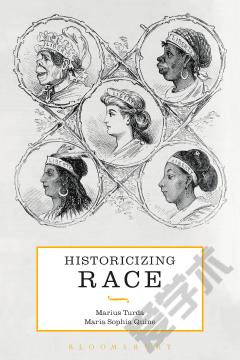Racism —— A Short History
----- 种族歧视
Racism: A Short History. By George M. Fredrickson. (Princeton: Princeton: Princeton University Press, 2002). Pp ix, 216. Acknowledgments, introduction, epilogue, appendix, notes, index. $22.95.) Historian George M. Fredrickson, an eminent authority on race and ethnicity, has produced a highly readable, sharply analytical, and consistently provocative overview of the course of Western racism from the Middle Ages to the present. He focuses on the evolution of the two most virulent forms of racism, anti-Semitism and color-coded white supremacy, that came to fullest fruition in the "overtly racist regimes" that emerged in the American South, Nazi Germany, and South Africa. Fredrickson compares and contrasts these regimes and probes the connections between them with consummate skill. He also maintains that racism, always nationally specific, invariably became involved in searches for national identity and cohesion and varied with the historical experience of each country. Despite such variations, all three overtly racist regimes possessed common features, including the implementation of an official racist ideology that severely proscribed the rights, privileges, and opportunities of blacks and/ or Jews. This volume traces the origins of Western racism to medieval Europe, during an era of intense religiosity in which the increasing hostility of Christians toward Jews transformed the anti-Judaism endemic to Christianity into an anti-Semitism that made getting rid of Jews preferable to converting them. Anti-Semitism, in turn, became racism when Jews came to be considered innately malevolent beings in league with the devil rather than merely guilty of harboring false beliefs. Of particular importance in this development was Spain, where attitudes and practices toward Muslims and Jews "served as a kind of segue between the religious intolerance of the Middle Ages and the naturalistic racism of the modern era" (p. 40). Although Fredrickson recognizes that Europeans had long associated the color black with evil, he nonetheless questions whether Europeans in general were strongly prejudiced against Africans prior to the beginning of the slave trade. Initially, he points out, religion rather than race justified the European enslavement of Africans: "The only way to save African souls was to enslave them" (p. 38). The dark skins of West Africans soon became a part of the equation, and the so-called Curse of Ham or Canaan was invoked to demonstrate that African slavery was divinely inspired. However, anti-black racism took root slowly because it ran counter to the Christian belief that the entire human race was of "one blood" and worthy of salvation. Only when emancipated from Christian universalism did colorcoded racism become an ideology. The volume explores the route by which this emancipation took place, beginning in the eighteenth century with the invention of the concept of races as basic human types classified by skin color and other physical characteristics. The scientific racism that ultimately emerged was used to determine those groups, notably Jews and blacks, who were unfit to possess the rights of full citizenship. "Scientific" pronouncements regarding the innate inferiority of blacks lent legitimacy to popular views long held in the United States, especially in the South. â¦
{{comment.content}}








 京公网安备 11010802027623号
京公网安备 11010802027623号